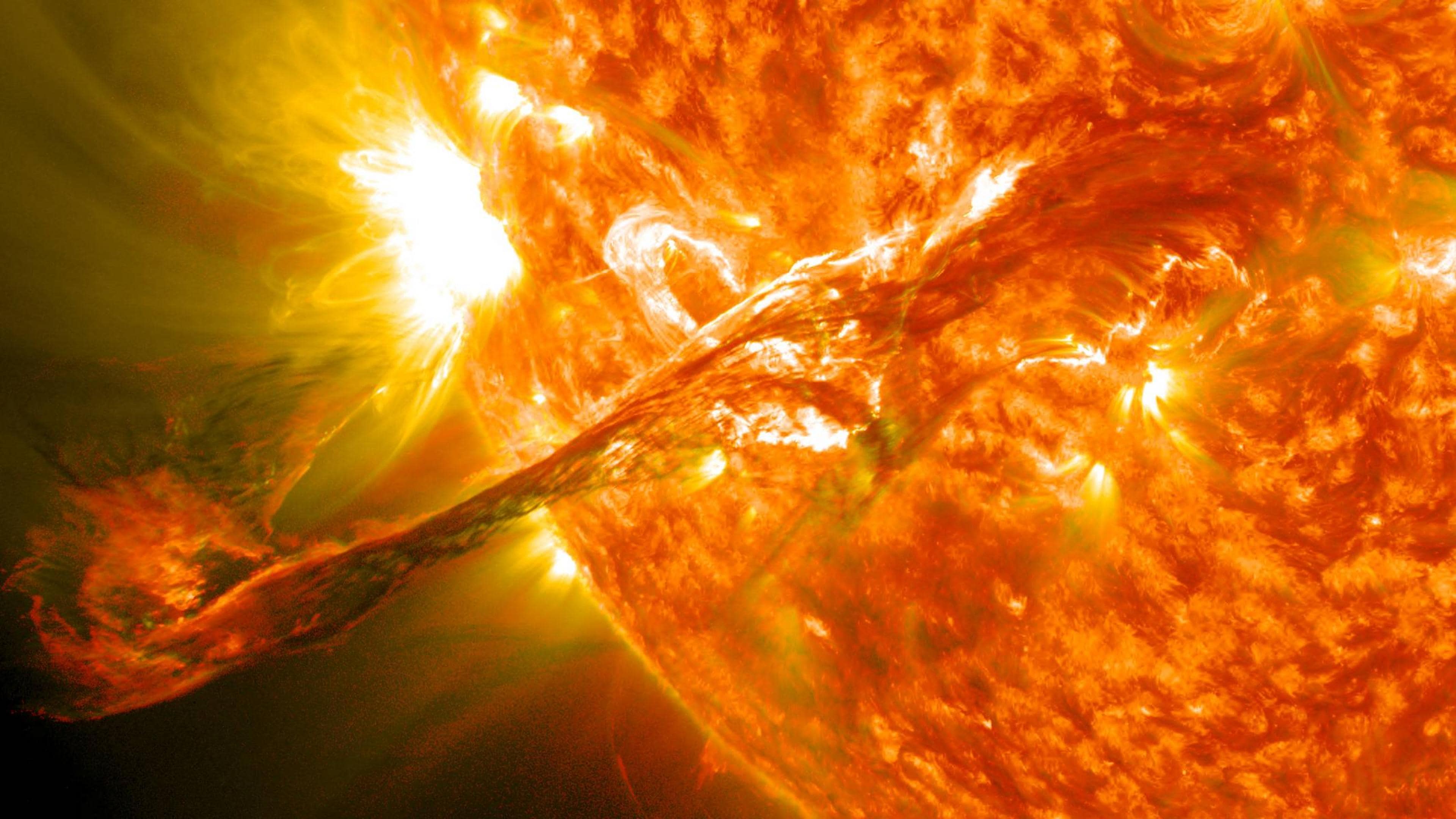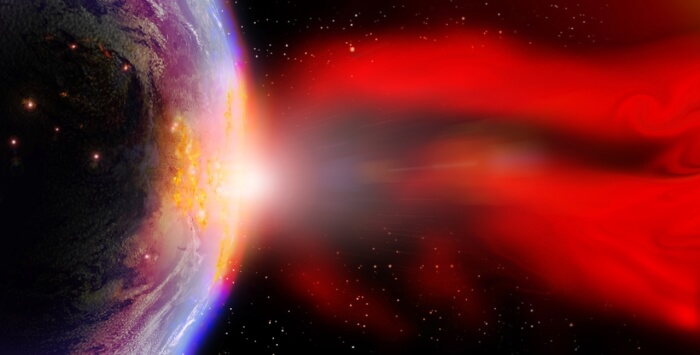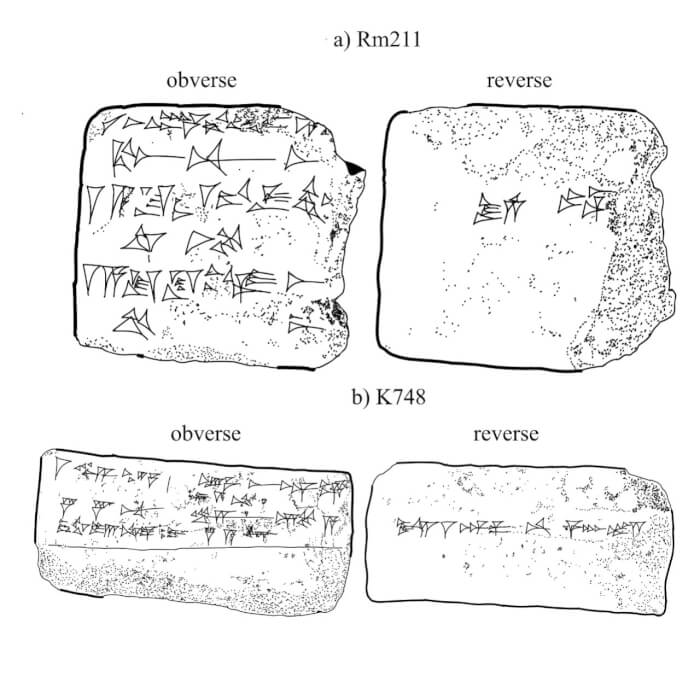Ancient Inscriptions Reveal Ancient Disaster Happening 2,700 Years Ago
Scientists have recently found proof of strange solar activity, likely to resembles a trio of giant solar storms, in ancient Assyrian cuneiform tablets. The magnetic storms, presented in astrological documents, match the data from the tree ring, pointing out that the events occurred around 660 BC.
The discovery probably assists scientists in predicting the incoming magnetic storms from the brightest star in our solar system, which are incidents that may largely disrupt the technology systems on our beloved planet that we humans are dependent on.
Since the first decade of the 17th century, astronomers have begun to use telescopes to observe sunspots, the dark patches emerging on the star’s surface, often connected with solar flares – unexpected explosions that emit a vast amount of radiation into space.
Geomagnetic storms are the consequence of the radiation from solar flares and coronal mass ejections (CMEs) directing toward the Earth, and they are where the particles originated from the sun come into contact with our planet’s atmosphere, causing major disruption to the communication systems, satellites and power grids.
In a study published in The Astrophysical Journal Letters, a team of scientists from the Osaka University, Japan, led by Hisashi Hayakawa claimed that “These space weather events constitute a significant threat to a modern civilization, because of its increasing dependency on an electronic infrastructure.”
His team stressed the importance on 3 events that might have occurred around 660 BC, stating that “These events occurred far before the onset of instrumental observations, well outside the more modern range of wide observational coverage. Therefore, in order to infer the general trend of solar activity and the occurrence of CMEs, candidate auroral records have been sought in historical documents around these events.”
The scientists also found that the Babylonians and Assyrians have begun to closely watch the sky around the 8th century at least. Rulers of the Assyrian empires even gathered astrological documents from professional astrologers to predict the ominous meaning of observed celestial events in the form of inscribed rectangular clay tablets.
Researchers carried out a survey of auroral records kept by the Assyrians to see if there were events that correspond with scientific data regarding ancient solar activity. They found cuneiform tablets that held records of aurora dating between 680 and 650 BC.
The inscriptions depict strange red skies, with one speaking of a “red cloud”, and another that reads “red covers the sky,” which were believed by researchers to possibly be the consequence of “stable auroral red arcs,” where magnetic fields provoke electrons in atmospheric oxygen atoms to release lights.
Additionally, experts indicated that in the past, the distance between the Earth’s magnetic North Pole and the Middle East would be much shorter than its current counterpart. This means that the incidents linked with solar activity would have been observed further south.
In one statement, senior author Yasuyuki Mitsuma said: “These findings allow us to recreate the history of solar activity a century earlier than previously available records. This research can assist in our ability to predict future solar magnetic storms, which may damage satellites and other spacecraft.”
Another researcher who wasn’t involved in the study named Valerie Trouet, from the Laboratory of Tree-Ring Research at the University of Arizona, believes that the discoveries exemplify how new approaches can lead to findings that can help better our knowledge on not only our history, but also for our future.
Social superflares, including the ones documented in 774 AD and 660 BC, according to Trouet, are rare, but might be able to depelete the ozone layer of our planet, interfere with its geomagnetic field, and severely damage our technology and telecommunication systems. Therefore, the more knowledge we earn about them, the better we are equipped and prepared to confront them.
Valerie Trouet, from the Laboratory of Tree-Ring Research at the University of Arizona, who was not involved in the study, told Newsweek the findings "exemplifies how new approaches can lead to discoveries that are relevant not only for improving our understanding of human history, but also for our future."
She added: "Solar superflares, such as recorded in 774 [AD] and 660 [BC], are rare, but they can potentially deplete the Earth's ozone layer, disrupt its geomagnetic field, and seriously mess with our technology and telecommunication systems. The more we know about them the better."
H/T: Newsweek
The discovery probably assists scientists in predicting the incoming magnetic storms from the brightest star in our solar system, which are incidents that may largely disrupt the technology systems on our beloved planet that we humans are dependent on.
Since the first decade of the 17th century, astronomers have begun to use telescopes to observe sunspots, the dark patches emerging on the star’s surface, often connected with solar flares – unexpected explosions that emit a vast amount of radiation into space.
Geomagnetic storms are the consequence of the radiation from solar flares and coronal mass ejections (CMEs) directing toward the Earth, and they are where the particles originated from the sun come into contact with our planet’s atmosphere, causing major disruption to the communication systems, satellites and power grids.
 Source: Flickr
Source: Flickr
In a study published in The Astrophysical Journal Letters, a team of scientists from the Osaka University, Japan, led by Hisashi Hayakawa claimed that “These space weather events constitute a significant threat to a modern civilization, because of its increasing dependency on an electronic infrastructure.”
His team stressed the importance on 3 events that might have occurred around 660 BC, stating that “These events occurred far before the onset of instrumental observations, well outside the more modern range of wide observational coverage. Therefore, in order to infer the general trend of solar activity and the occurrence of CMEs, candidate auroral records have been sought in historical documents around these events.”
The scientists also found that the Babylonians and Assyrians have begun to closely watch the sky around the 8th century at least. Rulers of the Assyrian empires even gathered astrological documents from professional astrologers to predict the ominous meaning of observed celestial events in the form of inscribed rectangular clay tablets.
 Source: Dreamstime
Source: Dreamstime
Researchers carried out a survey of auroral records kept by the Assyrians to see if there were events that correspond with scientific data regarding ancient solar activity. They found cuneiform tablets that held records of aurora dating between 680 and 650 BC.
The inscriptions depict strange red skies, with one speaking of a “red cloud”, and another that reads “red covers the sky,” which were believed by researchers to possibly be the consequence of “stable auroral red arcs,” where magnetic fields provoke electrons in atmospheric oxygen atoms to release lights.
Additionally, experts indicated that in the past, the distance between the Earth’s magnetic North Pole and the Middle East would be much shorter than its current counterpart. This means that the incidents linked with solar activity would have been observed further south.
 Source: The Astrophysical Journal Letters
Source: The Astrophysical Journal Letters
In one statement, senior author Yasuyuki Mitsuma said: “These findings allow us to recreate the history of solar activity a century earlier than previously available records. This research can assist in our ability to predict future solar magnetic storms, which may damage satellites and other spacecraft.”
Another researcher who wasn’t involved in the study named Valerie Trouet, from the Laboratory of Tree-Ring Research at the University of Arizona, believes that the discoveries exemplify how new approaches can lead to findings that can help better our knowledge on not only our history, but also for our future.
Social superflares, including the ones documented in 774 AD and 660 BC, according to Trouet, are rare, but might be able to depelete the ozone layer of our planet, interfere with its geomagnetic field, and severely damage our technology and telecommunication systems. Therefore, the more knowledge we earn about them, the better we are equipped and prepared to confront them.
Valerie Trouet, from the Laboratory of Tree-Ring Research at the University of Arizona, who was not involved in the study, told Newsweek the findings "exemplifies how new approaches can lead to discoveries that are relevant not only for improving our understanding of human history, but also for our future."
She added: "Solar superflares, such as recorded in 774 [AD] and 660 [BC], are rare, but they can potentially deplete the Earth's ozone layer, disrupt its geomagnetic field, and seriously mess with our technology and telecommunication systems. The more we know about them the better."
H/T: Newsweek
Share this article
Advertisement